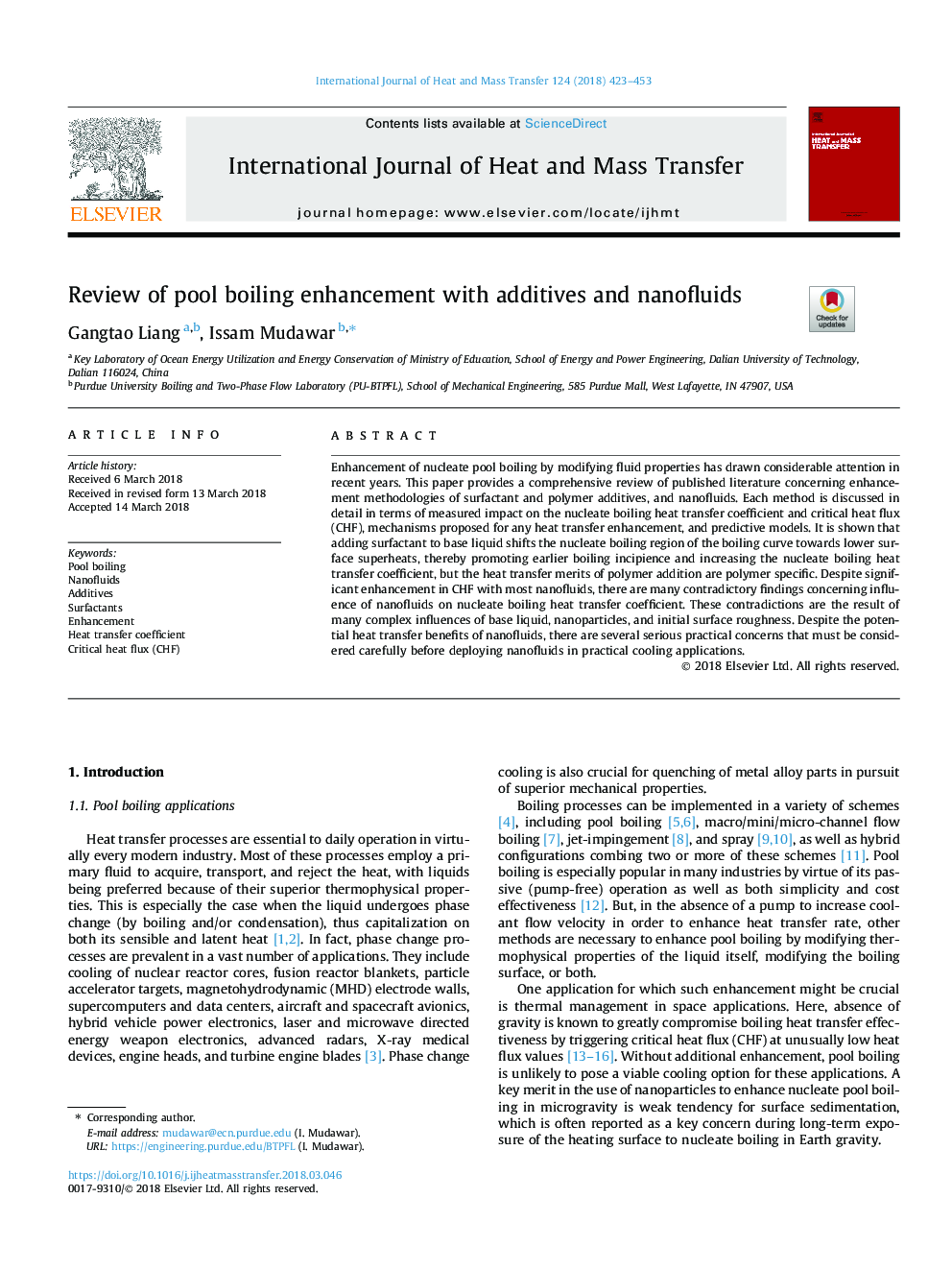| Article ID | Journal | Published Year | Pages | File Type |
|---|---|---|---|---|
| 7054115 | International Journal of Heat and Mass Transfer | 2018 | 31 Pages |
Abstract
Enhancement of nucleate pool boiling by modifying fluid properties has drawn considerable attention in recent years. This paper provides a comprehensive review of published literature concerning enhancement methodologies of surfactant and polymer additives, and nanofluids. Each method is discussed in detail in terms of measured impact on the nucleate boiling heat transfer coefficient and critical heat flux (CHF), mechanisms proposed for any heat transfer enhancement, and predictive models. It is shown that adding surfactant to base liquid shifts the nucleate boiling region of the boiling curve towards lower surface superheats, thereby promoting earlier boiling incipience and increasing the nucleate boiling heat transfer coefficient, but the heat transfer merits of polymer addition are polymer specific. Despite significant enhancement in CHF with most nanofluids, there are many contradictory findings concerning influence of nanofluids on nucleate boiling heat transfer coefficient. These contradictions are the result of many complex influences of base liquid, nanoparticles, and initial surface roughness. Despite the potential heat transfer benefits of nanofluids, there are several serious practical concerns that must be considered carefully before deploying nanofluids in practical cooling applications.
Keywords
Related Topics
Physical Sciences and Engineering
Chemical Engineering
Fluid Flow and Transfer Processes
Authors
Gangtao Liang, Issam Mudawar,
